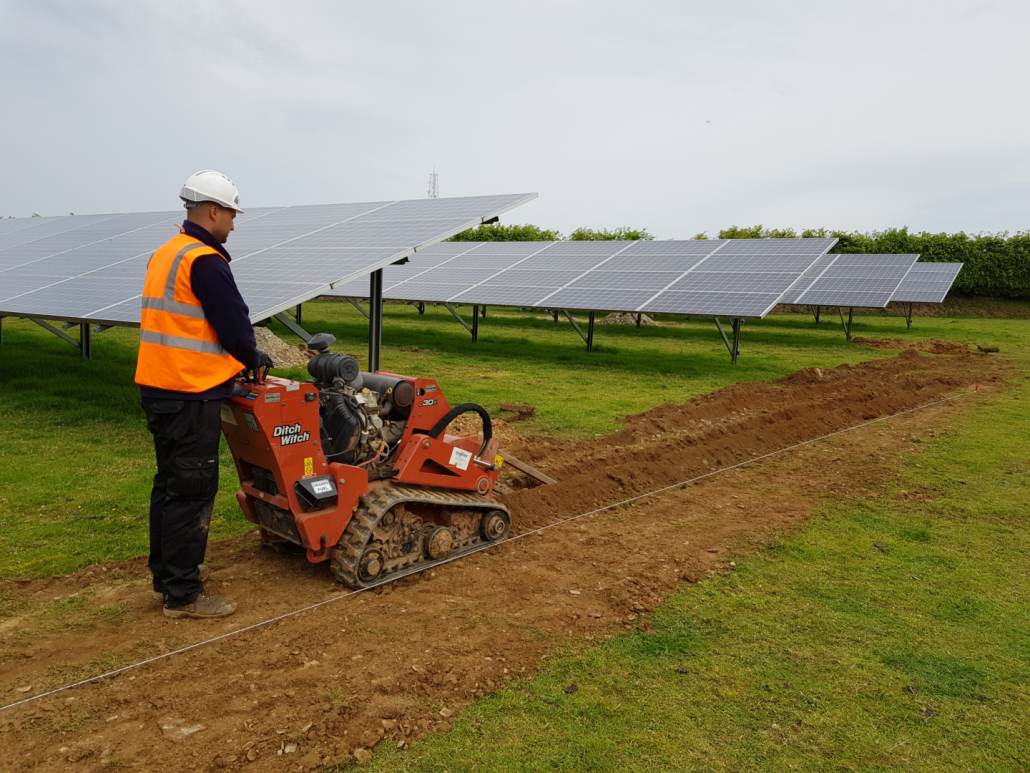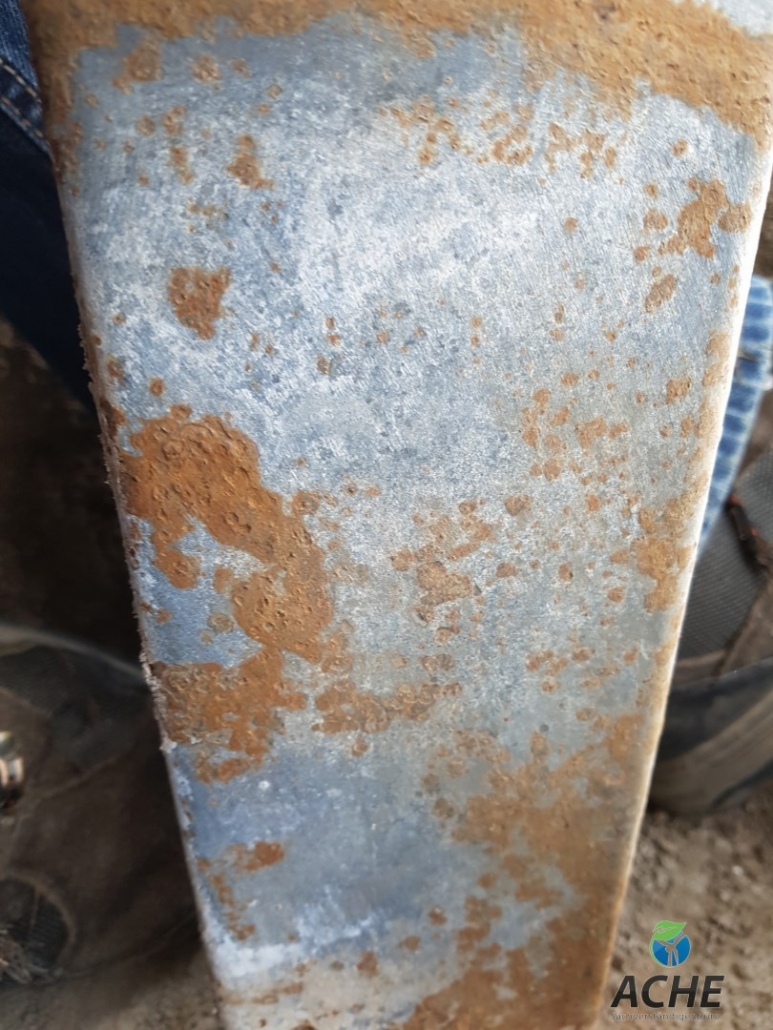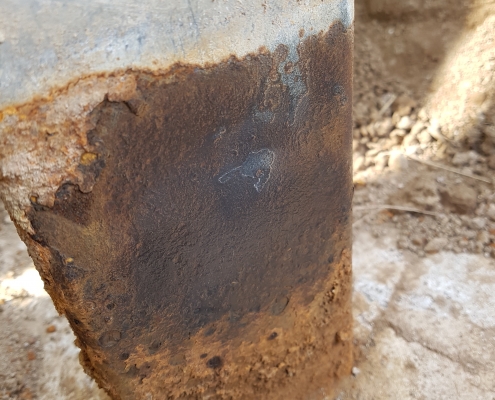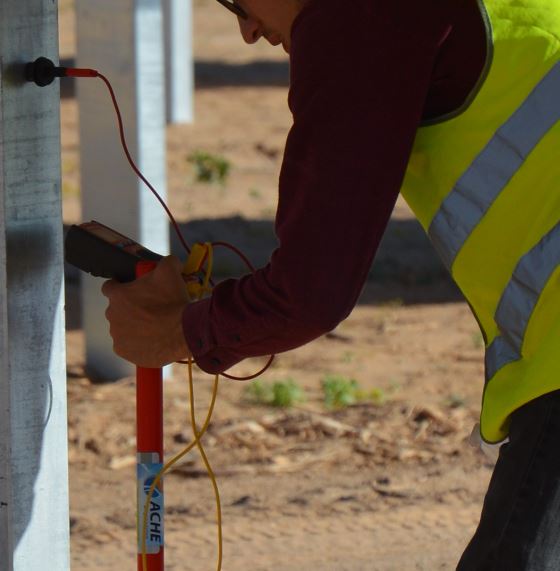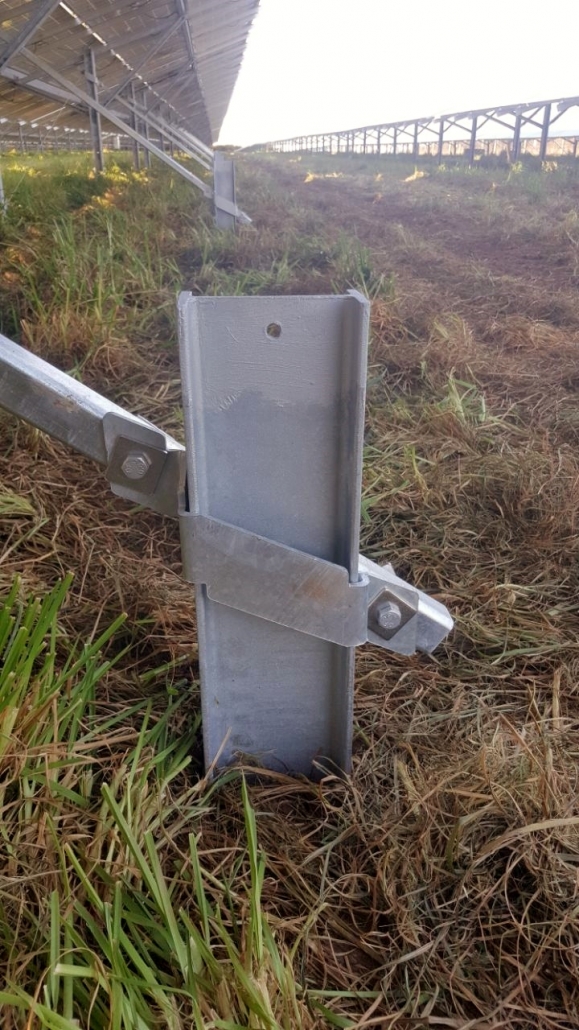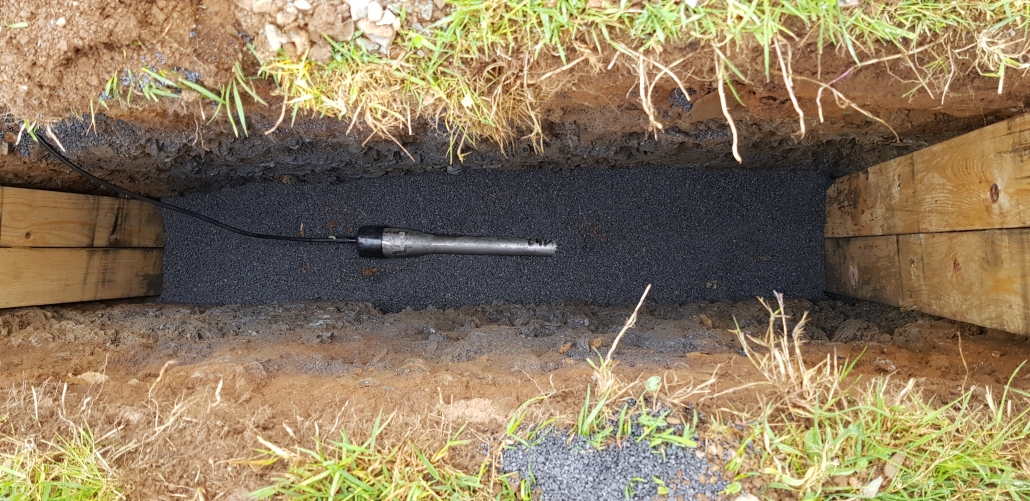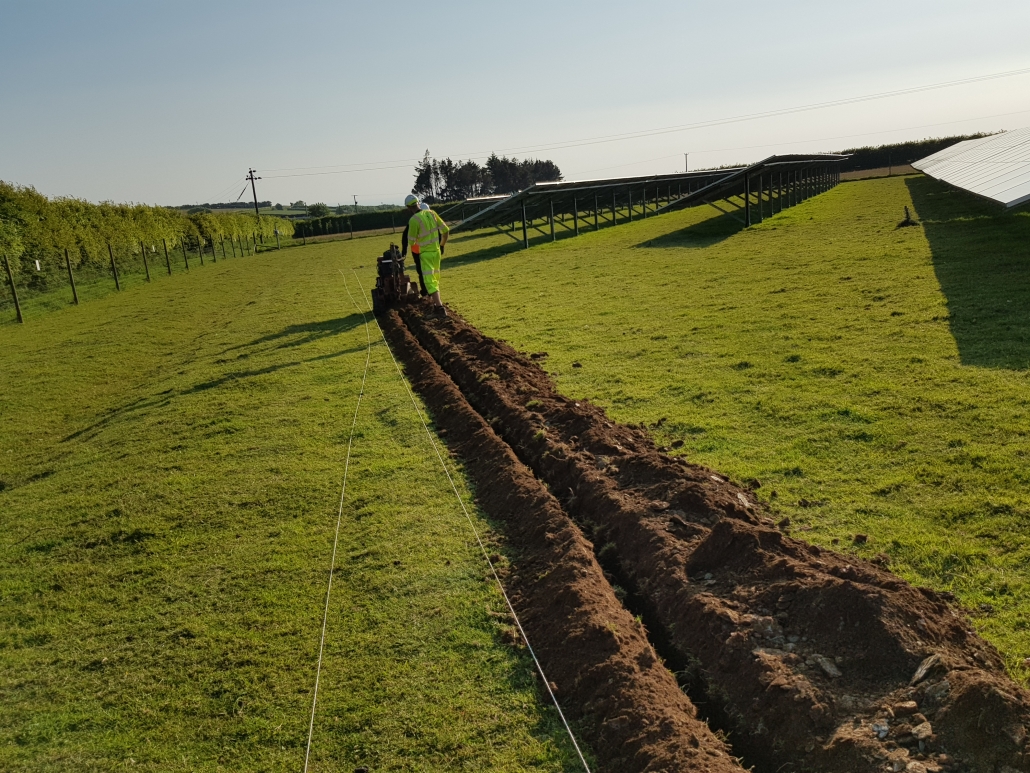Active protection against corrosion
Cathodic corrosion protection
Ache Engineering GmbH is a specialist company that provides international protection of photovoltaic systems against corrosion. This measure is often necessary to protect the static components of a photovoltaic rack from damage and rust in a short time, without further damage and without a great influence on the operation.
Here, a fundamental distinction must be made between above-ground and underground corrosion. The most frequent and critical case in which major damage is quickly caused is underground anodic corrosion. The necessary protective measures differ greatly in some cases.
Due to special ground conditions or due to the system configuration, corrosion often occurs at the posts of the PV tables.
After the protective zinc layer has been removed in some areas, internal compensating currents and the exposed steel parts cause a considerably accelerated corrosion, which can only be classically protected subsequently by considerable effort, without raising the question of the quality of the protection or the service life.
In cathodic corrosion protection, the part to be protected against corrosion is electrically connected to another part, the so-called sacrificial anode.
Electrons are exchanged between the two parts and only the planned oxidation at the sacrificial anode takes place. In this way, a cost-effective protection can be easily implemented, depending on the soil conditions, which can also protect the parts for over 100 years if desired.
For this purpose we use special anodes with a coordinated and adapted current for the entire system, depending on the environmental conditions of the photovoltaic farm. These are inserted into the ground in a so-called anode bed.
This simplified explanation briefly summarizes what Ache Engineering GmbH fully realizes. We are your partner for the protection of industrial, tank and offshore plants, pipe networks in water or in the ground, the protection of reinforced concrete and much more. We take all steps from planning to subsequent maintenance, control and remote monitoring to efficiently protect your plants against corrosion.
The necessary interventions in most existing solar parks are manageable and are professionally coordinated with the operator.
Ache Engineering has international experience in the field of cathodic corrosion protection and implements the protective measures from planning to commissioning.


